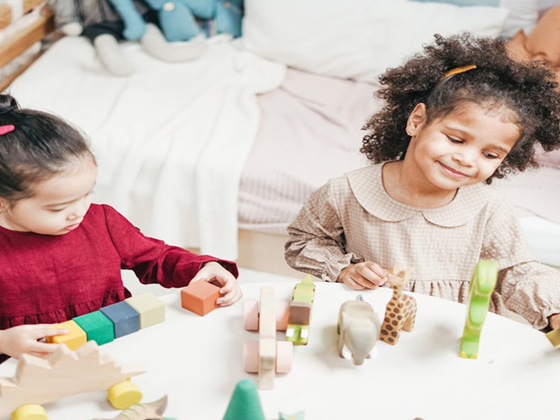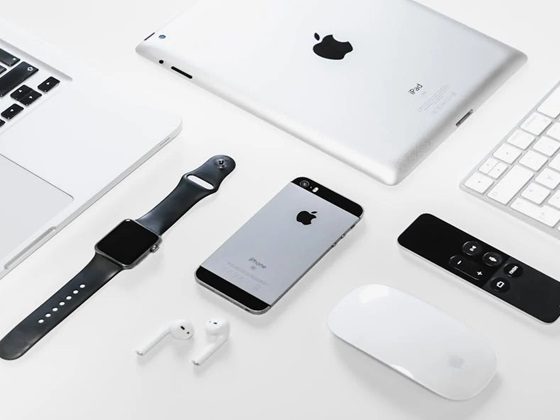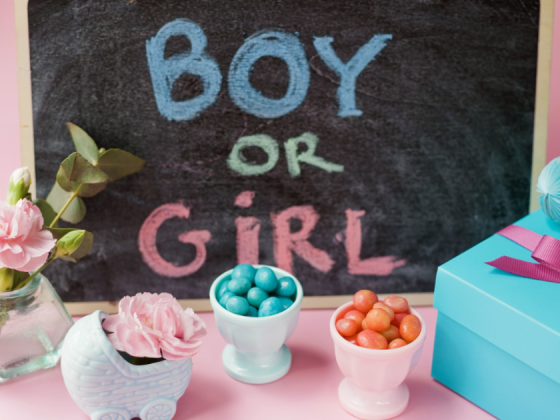Toys play a crucial role in toddlers’ development, entertaining while promoting cognitive, social, and motor skills. However, not all toys are created equal, and some can pose significant risks to young children. This article explores the essential toys to avoid for your toddlers’ safety and offers insights into safer alternatives.
Types of Toys to Avoid
1. Toys with Small Parts
Toys that contain small parts are one of the most significant hazards for toddlers. Children in this age group tend to explore their environment by putting objects in their mouths. Small pieces can pose choking hazards, leading to severe injuries or even fatal outcomes. Here are some examples of toys to avoid:
- Puzzle Pieces: While puzzles can be educational, many have small pieces that can easily be swallowed.
- Action Figures and Dolls: Some figures come with accessories or removable parts that can pose choking risks.
- Building Sets: Many construction toys are marketed to older children but can contain small, unsafe components for toddlers.
Always check the packaging for age recommendations and look for warnings about small parts. A good rule of thumb is to use a choke tube (a small cylinder about the size of a child’s windpipe). If an object fits inside, it is too small for toddlers.
2. Loud Toys
Toys that produce loud sounds, such as musical instruments or electronic toys, can damage a toddler’s hearing. Sounds louder than 85 decibels can cause hearing loss, especially when the sound source is close to a child’s ears. Here are some specific types of loud toys to avoid:
- Musical Instruments: Many toy instruments can produce loud sounds.
- Electronic Toys: Some toys have built-in speakers that emit sounds similar to a car horn, which can be harmful if held too close to the ear.
- Squeak Toys: While often considered safe and fun, these toys can sometimes exceed safe noise levels.
Instead of opting for toys that produce noise, look for quieter alternatives. Consider soft toys that encourage imaginative play without causing auditory stress.
3. Toys with Toxic Materials
Toys made with toxic materials can pose severe health risks to toddlers. Chemicals like phthalates, lead, and bisphenol A (BPA) have been linked to developmental issues and health problems in children. Here’s what to avoid:
- Painted Toys: Older toys may contain lead-based paint, which can be harmful if ingested. Ensure any painted toys are certified lead-free.
- Plastic Toys: Look for toys marked as BPA-free and avoid cheap plastic toys that may not meet safety standards.
- Imported Toys: Some toys manufactured in countries with lax safety regulations may contain harmful substances.
4. Toys with Sharp Edges
Toys with sharp edges or points can cause cuts and injuries to toddlers while developing their motor skills. When choosing toys, avoid:
- Metal Toys: Many metal toys have sharp edges that can cut little fingers or faces.
- Certain Plastic Toys: Some plastic toys may have poorly finished edges that can be sharp or splinter.
- DIY Toys: Handcrafted or homemade toys may not have been tested for safety and could contain sharp areas.
Opt for toys with rounded edges or designed for toddlers to ensure safe playtime.
5. Toys with Long Strings or Cords
Toys that come with long strings or cords pose strangulation hazards for toddlers. It’s essential to keep an eye out for:
- Pull Toys: Many pull toys may have too long strings and can become a strangulation hazard.
- Costumes or Dress-up Accessories: These often include long ties or ribbons that can wrap around a child’s neck.
- Toys with Attached Accessories: Many toys with attached cords can pose risks if the child gets entangled.
When purchasing toys, look for those with shorter strings or those designed to minimize risk.
6. Balloons
While balloons can be fun for older kids, they are a significant choking hazard for toddlers. Broken or deflated balloons can pose severe risks if swallowed.
- Deflated Balloons: These can quickly become choking hazards, as they can block airways.
- Uninflated Balloons: Uninflated balloons can also pose choking risks, particularly if toddlers explore them with their mouths.
If you choose to use balloons for celebrations, ensure they are kept out of reach of toddlers and always supervise closely.
7. Inflatable Toys
Inflatable toys can be appealing but have risks, especially if they are not adequately secured. These include:
- Bouncy Houses: They may tip over or deflate unexpectedly, leading to injuries.
- Inflatable Pools: Supervision is essential as toddlers can drown even in shallow water.
- Air-Filled Toys: If punctured, they can become hazards as they deflate rapidly.
Ensure that any inflatable toys you purchase are suitable for toddlers and that they come with safety guidelines.
8. Toys That Promote Violence
While many children enjoy action figures and similar toys, certain items may encourage aggressive behavior and attitudes. Be cautious of:
- Weapons and Toy Guns: These toys can normalize violent behavior and may lead to aggressive play.
- Fighting Action Figures: Toys that depict fighting or violent scenarios can influence how children view conflict resolution.
Consider choosing toys that promote cooperation and creativity rather than violence. Opt for items that encourage imaginative play and positive interactions.
9. Hand-Me-Downs
While hand-me-down toys can save money, they may not always be safe. Here’s why you should be cautious:
- Lack of Safety Standards: Older toys may need to meet current safety regulations, potentially posing hazards that modern toys do not.
- Worn-Out Parts: Toys may have broken pieces that can become choking hazards or sharp edges.
- Lead Paint: Older toys may contain lead paint, especially those manufactured before 1978.
Constantly scrutinize hand-me-down toys for safety and compliance with current standards. If you’re unsure, it’s better to discard them.
10. Unsafe Ride-On Toys
Ride-on toys can be an excellent way for toddlers to develop motor skills, but some may need more fe. Avoid:
- Toys Without Safety Features: Look for ride-on toys with safety harnesses designed to prevent tipping.
- Non-Stable Ride-Ons: Toys that can easily tip over can cause injuries. Always choose stable options.
- Riding Toys Intended for Older Kids: Ensure that the toy is specifically designed for toddlers, not older children, as it may not be safe for younger ones.
When selecting ride-on toys, ensure they are appropriate for your child’s age and size and equipped with necessary safety features.
11. Water-Related Toys
While water play can be enjoyable and beneficial for toddlers, certain water-related toys can present safety concerns, especially when they involve:
- Drowning Hazards: Toys designed for water play, such as inflatable pools or large water tables, can pose drowning risks if left unattended. Ensure that any water-related activity is supervised closely.
- Non-Toddler-Friendly Designs: Avoid toys designed for older children, such as pool toys or water slides, that may not have adequate safety features for toddlers. These toys can lead to slips and falls or may tip over easily.
- Mold-Prone Materials: Many bath toys can harbor mold and bacteria if they have small openings that retain water. Look for bath toys made from materials that are easy to clean and do not retain water, or consider alternatives specifically designed for hygiene.
12. Unsupervised Electronic Toys
Electronics can engage toddlers, but many electronic toys can lead to unsafe situations if not properly monitored. Be cautious of:
- Toys with Cords or Loose Wires: Many electronic toys have cords or wires that can pose strangulation risks for young children. Choose toys that are battery-operated without cords.
- Heavy or Bulky Electronics: Large electronic toys can be complicated for toddlers, increasing the risk of injury if they fall or tip over. Opt for lightweight toys that are easy for little hands to manage.
- Toys That Require Batteries: Battery-operated toys can be hazardous if the battery compartments are not secure. Always check that batteries are enclosed so toddlers cannot access them. Loose batteries pose choking risks and can cause chemical burns if ingested.
Trends in Safe Toy Choices
As awareness of toy safety increases, many manufacturers are adopting safer practices. Here are some notable trends to consider when selecting toys for your toddlers:
- Eco-Friendly Materials: Many brands are shifting towards sustainable materials like organic cotton, bamboo, and recycled plastics. These options reduce the risk of exposure to harmful chemicals and lessen environmental impact. Eco-friendly toys are becoming increasingly popular among parents who prioritize health and sustainability. Brands like Green Toys and Hape lead the way in offering safe, environmentally responsible options.
- Educational Toys: There is a growing trend toward toys that promote learning through play. These toys encourage problem-solving, creativity, and social skills while avoiding the risks associated with traditional toys. For instance, building sets and puzzles can enhance fine motor skills and cognitive development. Companies like Melissa & Doug provide a wide range of educational toys that engage young minds while keeping safety in mind.
- Minimalist Designs: Simple toys that do not have excessive parts or electronic components tend to be safer and often encourage imaginative play. Wooden toys, for example, are durable and secure and promote open-ended play. Brands like PlanToys and Tegu create beautiful, minimalist designs that capture children’s attention without distracting them.
- Interactive and Non-Digital Options: With an increasing awareness of screen time’s adverse effects on young children, there’s a push for toys that encourage physical interaction rather than digital engagement. Toys like stacking blocks, nesting cups, and sensory play kits foster hands-on exploration and creativity without the potential dangers of digital devices.
- Inclusive and Adaptive Toys: More manufacturers are creating toys that cater to children with different abilities. These toys are designed to be accessible and engaging for all children, ensuring that playtime is inclusive. Look for brands like Playmobil and Fisher-Price, which develop toys that accommodate various developmental needs.
- Safety Testing Transparency: Parents increasingly seek toys from transparent companies about their safety testing processes. Many brands now provide detailed information about how their products are tested for safety, including certifications from organizations like ASTM International or the CPSC. This openness allows parents to make informed choices.
By keeping these trends in mind, you can select toys that provide fun and support safe play and developmental growth for your toddlers. Choosing toys that align with these trends can significantly reduce risks while enhancing your child’s play experience.
Final Thoughts
Choosing suitable toys for toddlers is crucial for parents and caregivers. Avoid toys with small parts, loud noises, toxic materials, sharp edges, long strings, and other hazards, as these are toys that can increase the risk of accidents and health issues. Instead, prioritize safe, educational, and eco-friendly options that inspire creativity and learning. Regularly check toys for wear and tear and promote safe play habits. Investing in quality toys today leads to happier, healthier play experiences for your little ones.



